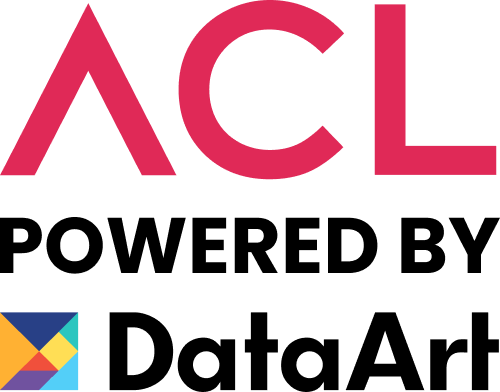In the realm of nearshore software development, the bridge between success and failure often rests on the cornerstone of communication.
As businesses increasingly collaborate with nearshore teams across borders, clear, concise, and effective communication becomes paramount. Let's explore the pivotal strategies and tools in fostering a seamless exchange of ideas and feedback between nearshore teams and client businesses.
Understanding Cultural Nuances
Effective communication in nearshore software development is not just about language proficiency but also cultural understanding. Each country and region has its unique cultural norms and business etiquettes. Training sessions that focus on cultural awareness can immensely benefit both nearshore teams and their clients. This understanding helps in creating a respectful and empathetic communication environment where nuances are appreciated, not misunderstood.
Leveraging Technology for Seamless Collaboration
In today's digital age, technology plays a crucial role in bridging the physical gap between nearshore teams and clients. Tools like Slack, Microsoft Teams, and Zoom have become indispensable for real-time communication. Additionally, project management tools like Jira and Trello help in tracking progress and maintaining transparency. These digital platforms not only facilitate regular updates and meetings but also provide a repository for shared resources, enhancing clarity and accountability.
.png?width=1920&height=1080&name=BLOG%20(7).png)
Regular and Structured Communication
The frequency and structure of communication are crucial in nearshore setups. Regular scheduled meetings, be it daily stand-ups or weekly reviews, ensure that everyone is on the same page. However, it's equally important to keep these meetings structured to respect everyone's time. Clear agendas, time-boxed sessions, and concise minutes of meetings can go a long way in making communication efficient and productive.
Language Proficiency and Clarity
While English is often the lingua franca in global business, not every team member may be equally fluent. Investing in language training can be a significant advantage. Simultaneously, encouraging an environment where team members feel comfortable asking for clarifications promotes a healthy communication culture. Clarity in documentation, be it requirement specs or project updates, also plays a critical role in minimizing misunderstandings.
Feedback Mechanisms and Open Channels
Constructive feedback is the lifeblood of continuous improvement in software development. Establishing regular feedback mechanisms where both parties can express concerns, provide suggestions, and acknowledge successes is vital. Additionally, having open channels where team members can communicate informally can foster a sense of camaraderie and mutual respect.
.png?width=1920&height=1080&name=BLOG%20(8).png)
Recent Posts
Bridging the Communication Gap between US/Canada and LatAm Teams
When US and Canadian businesses collaborate with nearshore teams in Latin America (LatAm), they are met with a unique set of communication dynamics. The close time zone alignment between North America and LatAm is a significant advantage, allowing for real-time communication that is crucial in Agile development environments.
This geographical proximity enables synchronous communication, making it easier to schedule meetings and collaborative sessions that fit into everyone's workday. However, it's not just about being in similar time zones; it's about understanding the subtle cultural differences and work ethics. For instance, LatAm cultures often place a high value on personal relationships and respect, which can influence business interactions. Recognizing and respecting these cultural differences is key to building a strong and effective communication bridge.
Leveraging Cultural Synergies for Enhanced Communication
The cultural synergy between North American and Latin American teams can be a formidable asset. Many LatAm professionals are familiar with North American culture, which can help in understanding client expectations and communication styles. However, it's a two-way street. US and Canadian teams also need to be open to understanding the diverse cultural backgrounds of their LatAm counterparts. This might involve learning about local customs, holidays, and even the general approach to work-life balance.
Additionally, language proficiency, particularly in English and Spanish, can vary widely. Encouraging bilingualism in teams, or at least having key bilingual members, can greatly enhance mutual understanding and reduce the potential for miscommunication. Tools like language translation software can also aid in bridging any language gaps, ensuring that all team members, irrespective of their primary language, can contribute effectively. By fostering an environment of mutual respect and understanding, businesses from the US and Canada can effectively collaborate with their nearshore partners in LatAm, leading to successful and productive software development projects.
 In conclusion, effective communication in nearshore software development is not a one-size-fits-all formula. It requires a blend of cultural understanding, leveraging the right technological tools, maintaining regular and structured communication, ensuring language clarity, and establishing robust feedback mechanisms. By honing these aspects, nearshore teams and client businesses can transcend geographical and cultural barriers, paving the way for successful and harmonious collaborations.
In conclusion, effective communication in nearshore software development is not a one-size-fits-all formula. It requires a blend of cultural understanding, leveraging the right technological tools, maintaining regular and structured communication, ensuring language clarity, and establishing robust feedback mechanisms. By honing these aspects, nearshore teams and client businesses can transcend geographical and cultural barriers, paving the way for successful and harmonious collaborations.

.png)




